
PEDIATRICS HESI RN EXIT TEST BANK / HESI PEDIATRICS RN EXAM LATEST EXAM ALL 100 QUESTIONS AND CORRECT DETAILED ANSWERS WITH RATIONALES (VERIFIED ANSWERS) |ALREADY GRADED A+
PEDIATRICS HESI RN EXIT 2023-2024 TEST
BANK / HESI PEDIATRICS RN EXAM LATEST
EXAM ALL 100 QUESTIONS AND CORRECT
DETAILED ANSWERS WITH RATIONALES
(VERIFIED ANSWERS) |ALREADY GRADED A+
A 3-month-old infant weighing 10 lb 15 oz has an axillary temperature
of 98.9° F. What caloric amount does this child need? - ANSWER- 600
calories/day
Rationale:An infant requires 108 calories/kg/day. The first step is to
change 10 lb 15 oz to 10.9 lb. Then convert pounds to kilograms by
dividing pounds by 2.2, which is 10.9/2.2 = 4.954 kg, rounded to 5
kg. The second step is to multiply 108 calories/kg/day (108 × 5 = 540
calories/day). However, this infant requires 10% more calories
because of the 1° F temperature elevation. Ten percent of 540
(calories/day) is 54 and 540 + 54 = 594. This infant will require
approximately 600 calories/day
A 3-month-old infant returns from surgery with elbow restraints and a
Logan's bow over a cleft lip suture line. Which intervention should the
nurse implement to maintain suture line integrity during the initial
postoperative period? - ANSWER- Place the infant upright in an infant
seat position.
Rationale: The use of an infant seat simulates a supine position with
the head elevated and also prevents aspiration. Prone positioning
should be avoided to prevent disruption of the protective Logan's
bow and prevent the infant from rubbing the face on the bed
surface. Mittens are not necessary and decrease the ability to
provide sensory comfort, such as hand holding. Nasal suctioning
should be avoided to prevent trauma or dislodging clots at the
surgical site. Water-soluble lubricant will dry the suture line and
cause crusting, which predisposes the suture line to poor healing
and scarring.
The nurse assigns an unlicensed assistive personnel (UAP) to provide
morning care to a newly admitted child with bacterial meningitis. What
is the most important instruction for the nurse to review with the UAP? -
ANSWER- Use designated isolation precautions.
Prophylactic antibiotics are prescribed for a child who has mitral valve
damage. The nurse should advise the parents to give the antibiotics prior
to which occurrence? - ANSWER- Urinary catheterization
Rationale: Prophylactic antibiotics are usually prescribed prior to
any invasive procedure for children who have valvular damage.
A 4-year-old child has cystic fibrosis. Which stage of Erikson's theory of
psychosocial development is the nurse addressing when teaching
inhalation therapy? - ANSWER- Initiative
Rationale: Children 4 to 5 years of age are in the "Initiative vs.
Guilt" stage of Erikson's theory of psychosocial development
A nurse is preparing to end the shift and receives a lab report stating that
a child with asthma has a theophylline level of 15 mcg/dL. Which action
should the nurse take? - ANSWER- Communicate the result to the
oncoming nurse and document.
Rationale: The therapeutic level of theophylline is 10 to 20 mcg/dL,
so the child's level is within the therapeutic range. This information
evaluates the prescribed therapy and should be communicated in
the nurse's report.
A 2-year-old child with trisomy 21 (Down syndrome) is brought to the
clinic for a routine evaluation. Which assessment finding suggests the
presence of a common complication often experienced by those with
Down syndrome? - ANSWER- Presence of a systolic murmur
Rationale: Congenital heart disease occurs in 40% to 50% of
children with trisomy 21 (Down syndrome). Defects of the atrial or
ventricular septum that create systolic murmurs are the most
common heart defects associated with this congenital anomaly.
Which preoperative nursing intervention should be included in the plan
of care for an infant with pyloric stenosis? - ANSWER- Observe for
projectile vomiting.
Rationale: Projectile vomiting (D), the classic sign of pyloric
stenosis, contributes to metabolic alkalosis.
A 6-month-old male infant is admitted to the postanesthesia care unit
with elbow restraints in place. He has an endotracheal tube and is
ventilator-dependent but will be extubated soon following recovery from
anesthesia. Which nursing intervention should be included in this child's
plan of care? - ANSWER- Remove restraints one at a time and provide
range-of-motion exercises.
Rationale: Removing restraints one at a time is safer than
simultaneously. The infant should have the restrained extremities
assessed frequently for signs of neurologic or vascular impairment,
and range-of-motion exercises should be performed with these
assessments. Under no circumstances should restraints be applied to
the client continuously. Documentation of assessment findings
regarding the restrained extremities must occur much more
frequently than every 72 hours; however, the reason for using
restraints must be justified and should be stated in the medical
record.
The nurse notes that a 16-year-old male client is refusing visits from his
classmates. Further assessment reveals that he is concerned about his
edematous facial features. Based on these assessment findings, the nurse
should plan interventions related to which nursing diagnosis? -
ANSWER- Social isolation
Rationale: Peer acceptance and body image are significant issues in
the growth and development of adolescents. The answer addresses
the problem of a lack of contact with peers stemming from his desire
to protect his ego.
Ampicillin, 75 mg/kg, is prescribed for a 22-lb child. It is available in a
solution that contains 250 mg/5 mL. How many milliliters should the
nurse administer in one dose? - ANSWER- 15
Rationale: Take 22lbs / 2.2 = 10kg
10kg X 75mg/kg = 750mg
750/250 mg = 3mg X 5mL = 15
jordancarter 7 months ago
This study guide is clear, well-organized, and covers all the essential topics. The explanations are concise, making complex concepts easier to understand. It could benefit from more practice questions, but overall, it's a great resource for efficient studying. Highly recommend!
| Category | Exams and Certifications |
| Comments | 0 |
| Rating | |
| Sales | 0 |
Buy Our Plan

















